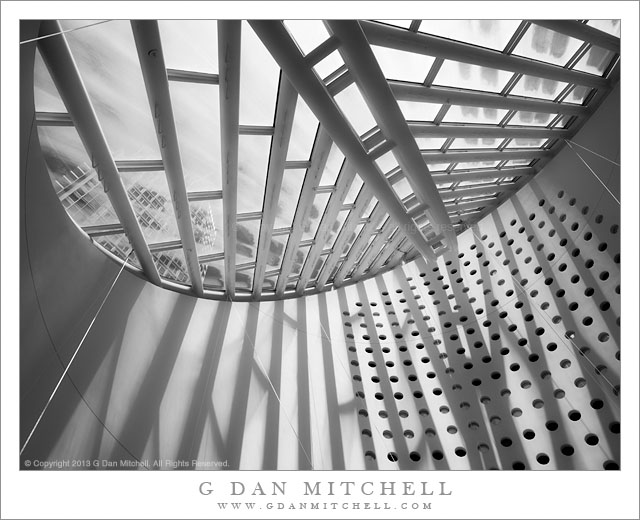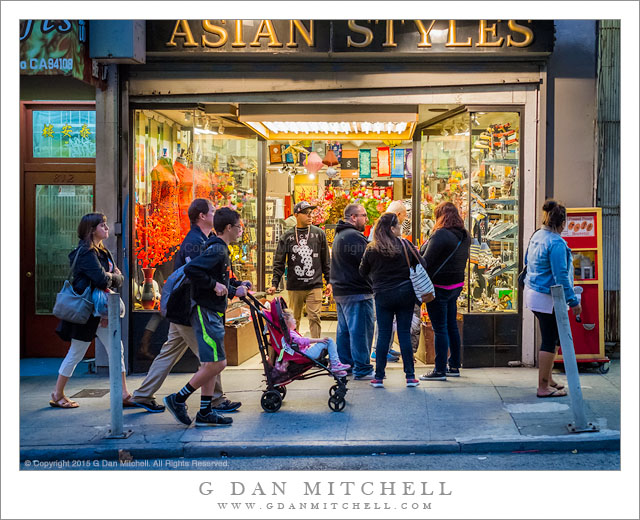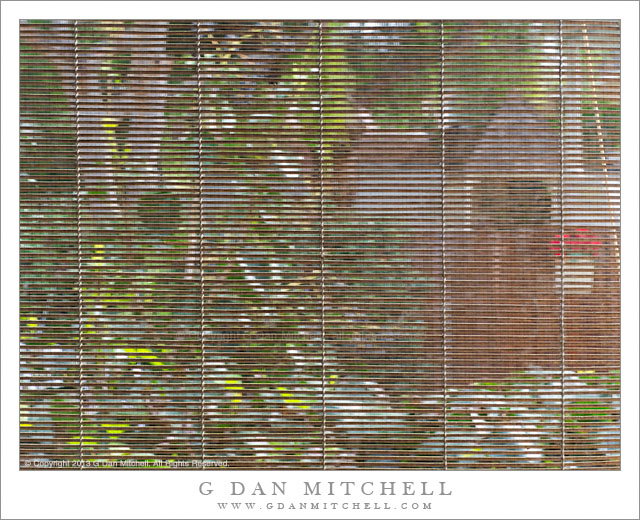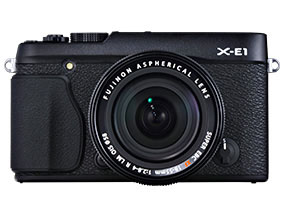
NOTE: Since I first wrote this article, Fujifilm has released additional X-trans sensor camera bodies and more lenses. Fujifilm has been very aggressive about continuously improving the line as reflected in the release schedule and their frequent firmware updates to add and improve camera functions. From time to time I will add updates to the beginning of this article to incorporate information about the newer equipment. The main original article continues below the “updates.”
If this article helps you make a purchase decision, I would be grateful if you would use the links found here to make your purchase. Doing so help support this website and it does not increase your costs at all. Thanks!
Update Early Summer 2019
As mentioned in an earlier “update” (see below) I now use the Fujifilm X-Pro2 (B&H | Adorama, a 24MP rangefinder style interchangeable lens body with a unique hybrid OVF/EFV design. I also have a few more lenses. While I have not updated all of the information below on Fujifilm bodies (much of which has become out-of-date since originally written in 2013), I have updated lens information to reflect newer lenses I have purchased or otherwise used.
Update Early Summer 2016
I now have the 24MP Fujifilm X-Pro2 (B&H | Adorama, a 24MP rangefinder style interchangeable lens body with a unique hybrid OVF/EFV design. I also now have a copy of the 55-140mm f/2.8 IS zoom (B&H | Adorama).
Update 2/23/14
In addition to the cameras mentioned elsewhere, Fujifilm has now also introduced the XT10 mirrorless interchangeable lens camera. This camera is similar to the XT1 in many ways — for example having the same sensor and the same viewfinder design — but at a lower price point.
Update 2/23/14
During the time that I’ve used a Fujifilm X-trans sensor camera, I’ve wondered about what level of print quality I might get – in particular, I’ve wondered how large I could print and still obtain excellent results. I have made some prints at 12″ x 18″ size, which is my usual size for proof prints, and they look great. A while ago I printed the “Spring Trees, Waterfall Mist” photograph (seen below in this article) at 15″ x 20″ with very good results. This past week I made an 18″ x 24″ print of a busy Manhattan “urban landscape” – and it really looks great! Detail is excellent, tonal quality is beautiful, noise is a non-existent issue, and the 16MP files, carefully post-processed, produce wonderful quality.
While there is no question in my mind that prints from full frame cameras can, all else being equal, be successful at larger sizes than those made from cropped sensor originals, there is also no question in my mind that the Fujifilm system can produce prints that are as good or better than those from any other cropped sensor system. (Unfortunately, there is no way to show you an actual print in an article on the web… ;-)
Update 1/28/14
Fujifilm has announced their new X-T1 Mirrorless Camera. (It is available now, but I’ll leave the original wording here.) The rumors regarding this new camera have been rampant for the past few weeks, and here is what we now know:
- 16.3 MP X-trans 1.5X cropped sensor
- ISO 100-51200
- 8fps continuous shooting
- Improved hybrid AF system incorporating contrast- and phase detection methods
- Improved manual focus with digital split image and focus peaking
- Faster, higher density, and larger electronic viewfinder
- 1080p HD Video
- WiFi
- Expanded manual control dials for shutter speed, +/- 3 EV exposure compensation, ISO, aperture (on many lenses), and more.
A number of features get my attention. My Fujifilm X-E1 works well at high ISO values, but this camera appears to take the much farther extending the lowest ISO from 200 to 100 and the highest all the way to 51600. The specifications and early reports on the web suggest that the AF system has been significantly improved, even beyond those improvements on the X-E2. The added manual controls are going to help a lot for the sorts of photography that many of us do with this sort of camera, where we need to change settings quickly and without going through menus. There are lots of other improvements, large and small, too numerous to mention here.
I’m very interested in this camera. My X-E1 is a wonderful little picture-making tool that complements my larger DSLR system – and the X-T1 sounds like it has been designed to significantly improve on this effective concept. (I have since upgraded to the X-Pro-2.)
The camera is available at site sponsor B&H:
- Fujifilm X-T1 Mirrorless Digital Camera Body
- Fujifilm X-T1 Mirrorless Digital Camera with 18-55mm lens
Update 10/22/13
In October 2013 Fujifilm announced an updated version of the X-E1, the X-E2, with availability scheduled for sometime in the second half of November 2013. (You may pre-order the new camera using links near the end of this page. Update on 11/21/13: Some versions of the camera are now shipping. Check the links for more details.) I have not had a chance to use the new body as of this writing, but here is some information about the new x-E2, along with some thoughts about it relative to the prior X-E1.
There is a perception that some camera manufacturers are slow to incorporate new technologies into their cameras or to make updates to improve the functionality of existing models. Fujifilm, on the other hand, seems to take a very different approach. They have frequently improved and updated the earlier X-series bodies by way of firmware updates that have offered significant improvements and added new features. This seems to carry over into the introduction of new models as well, and the X-E2 appears to incorporate a number of useful and important updates. Much of what follows is, as alluded to above, based on specification sheets and other writing about the camera since I have not used it as of this date.
- The camera’s physical design appears to be very similar to that of the X-E1 – a casual observer might not notice the differences. A few control buttons have been moved, and there are now separate AF and AE buttons. The display is a bit wider.
- The camera continues to use a 16MP 1.5x cropped format X-trans sensor, which I find to be a fine performer – the marketing material now refers to the “16.3MP APS-C X-Trans CMOS II sensor,” but time will tell whether the fundamental image quality is significantly different. Fujifilm says that image processing has been improved to include a Lens Modulation Optimizer function that compensates for image issues such as diffraction blur at smaller apertures along with other sorts of image aberrations. It will be interesting to see how the diffraction blur reduction software performs, as this becomes more of an issue with cameras with small sensors.
- An improved (e.g. faster) “EXR Processor II” is said to improve camera performance in many ways – quicker startup, shorter shutter lag, burst mode shooting, and more.
- The video performance has been improved. Video was not a strong point of the X-E1, but the X-E2 supports higher frame rates and more formats including 1080p video.
- Fujifilm reports that the AF system has been significantly updated. It is said to use both contrast-detection and phase-detection systems (each of which has advantages in various situations) to improve AF performance – this is said to help with both low light conditions and moving subjects. This is an important area since mirrorless camera AF systems generally do not perform as well with moving subjects.
- The camera incorporates a “digital split image” system for manual focus, which seems to recall the old split-image systems of film cameras, along with a focus peaking – both of which can assist with accurate manual focus.
- The camera has built-in wifi connectivity. Fujifilm says this will allow connectivity to “Android or iOS mobile device[s]” to browse images remotely and to transfer images. It is unclear whether this works with other devices such as laptops.
- The X-E2 uses the same battery as the X-E1, which might be an important issue for anyone considering an upgrade or using the X-E2 along with other X-series cameras.
And now, back to the original article about the X-E1, much of which is still very relevant whether you are looking at X-E2s or one of the newer bodies… especially the extensive discussions of lenses for the X-series system, functional aspects of the smaller camera as a general concept, and more. Enjoy!

Until recently I have photographed almost exclusively with DSLR gear – full frame for perhaps eight years, cropped sensor before that, and 35mm film back in the prehistoric era – with a varying set of lenses, a large tripod, and others bits and pieces of support gear. This gear works very well for me, but it is not small or light. With the prospect of a three-week overseas trip ahead of me, earlier this year I decided to look at smaller and lighter options that might work for the specific purposes I had in mind. My basic criteria included:
- Excellent image quality. While I was willing to consider some of the excellent four thirds systems, I was more inclined to get an APS-C cropped sensor format body. In addition, I needed a system that would provide excellent lens quality across a range of focal lengths.
- Small size and light weight. Because our intention was to limit ourselves to carry-on luggage, weight and size of body, lenses, and associated gear were an issue. My goal was to be able to carry my entire kit in a small messenger bag with room left over for other equipment such as a small laptop, a small hard drive, chargers and adapters, and other gear.
- Good functionality and reliability. The camera and lenses needed to be of high quality and to cover the range of needs that I might have in terms of focal lengths and apertures. Interchangeable lenses would be necessary. The gear needed to be reliable and relatively quick and easy to use. Since I would be shooting almost exclusively handheld, something with the responsiveness and simplicity of a street photography camera would make sense.
The options
Fortunately, we seem to be at a point in the development of digital photography equipment where the manufacturers are starting to move beyond the two primary choices of either DSLR or point and shoot (albeit “glorified” point and shoot in some cases). Recently quite a number of small and high quality digital cameras have become available from a variety of manufacturers. They range from so-called mirror-less systems with electronic viewfinders (EVF) to small DSLR-style cameras, with a bunch of interesting variations in between. Some use the smaller four thirds sensors, some use the APS-C “cropped sensor” system, and we are starting to see some (very expensive!) with full frame sensors.
(Some might wonder why I didn’t just look at the smallest Canon – since that’s the DSLR brand I use – APS-C DSLR cameras such as the t-series bodies or the newer Canon EOS Rebel SL1. These could be fine options, but they are still larger than the mirrorless options, and they would require me to use my rather large DSLR lenses. Even the smaller DSLRs plus their larger lenses are heavier and bulkier than the alternatives.)
In the end, I probably looked most seriously at systems from Olympus, Sony, and Fujifilm. To make a set of broad generalizations – the Olympus system may have initially been the best designed (I held an OMD and was very impressed with the feel of the thing), Sony may the most innovative, and Fujifilm seems to take a sort of “retro” approach that ties more closely to the old-school film rangefinder cameras. Any of the three could have been fine options, I think. In the end, I decided against the Olympus because I prefer the larger APS-C sensor, and against the Sony because I wasn’t as comfortable with the quality of the then-available lenses, and for the Fujifilm system on account of the larger sensor, the high quality lenses, and the comfortable old-school design.
The choice
This meant that my remaining choice was between the Fujifilm X-Pro1 and the X-E1. (There is also a fixed-focal-lenght X100s, but that wasn’t on my list since I want to use interchangeable lenses. Fujifilm has now also released the smaller X-M1, a camera targeting the “consumer” market and selling at a lower price.) The “X” in the names of these cameras refers to the so-called “X-trans” sensor design. While most sensors on current digital cameras use a repeating matrix of four photo sites (in groups containing one blue, one red, and two green sensors), the X-trans sensors use a different layout that covers a large area before repeating. Although it is been erroneously said to be “random” and more like “film grain,” this isn’t really the case, though it is true that the inevitable repeating photo site pattern has a more complex pattern. Continue reading Taking Stock OF Fujifilm Mirrorless Cameras



